If you're looking out for a medicinal mushroom species to grow at home, Reishi mushrooms are a fantastic option. Despite popular belief, growing your own functional fungi is not difficult. Even though it can be challenging, there are simple ways to grow your own Reishi mushrooms.
Growing Reishi is fascinating and very easy. It is a mushroom with well-known medical benefits. Additionally, it generates lovely fruiting bodies.
You may grow Reishi mushrooms without spending much money or using special grow rooms. Furthermore, there are numerous techniques you can use to grow them. Learn more about how to grow Reishi mushrooms in this guide, including the most straightforward indoor and outdoor growing techniques.
What is Reishi?
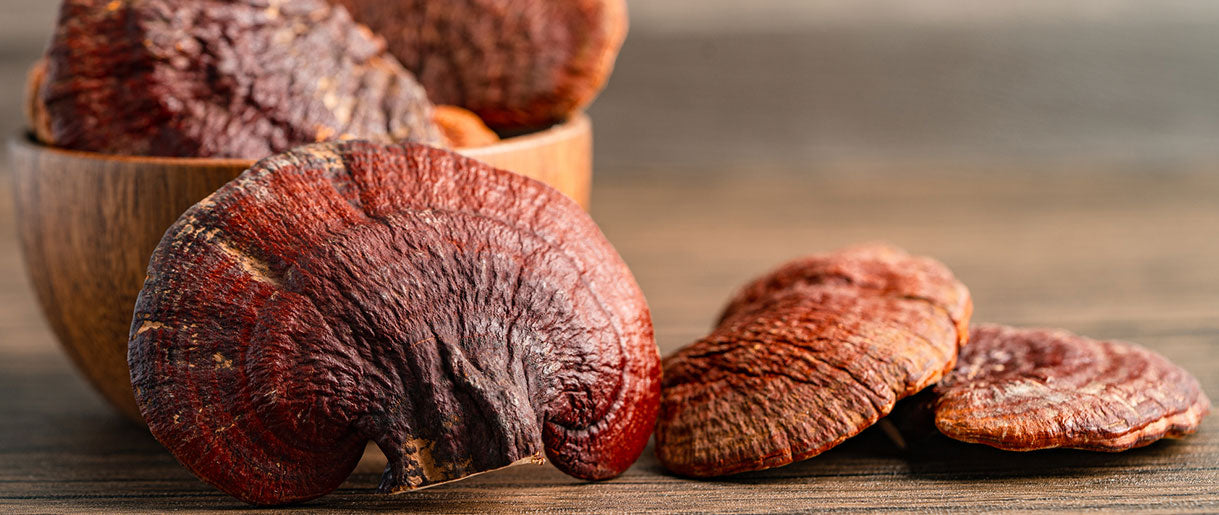
Red Reishi has long been respected in China and utilized in Asian nations where it is said to increase longevity and health. Commonly called "lingzhi" in China and "reishi" in Japan, Reishi mushrooms belong to a vast genus that spans a large portion of the world, from South America to Asia.
Reishi is popularly known as Ganoderma lucidum(1) in the scientific community. The term "Gano derma" (meaning "shiny skin") describes the bright red varnished aspect that gives this mushroom its striking beauty.
These fungi, sometimes called bracket or shelf fungi, grow horizontally from tree and stump trunks. As saprotrophic organisms, Reishi feed on hardwood stumps and dead or nearly dying trees. The mushroom lacks a place in the kitchen as a gourmet mushroom since it is pretty bitter and woody. Instead, Reishi is often used to make teas or tinctures after being dried, sliced, or powdered.
The growing requirement of Reishi varies among species. Some prefer temperate, tropical, or subtropical regions with many deciduous hardwood trees. Some prefer coniferous ecosystems.
What Does Reishi Look Like?
Reishi first develops as a thin, finger-like stalk, taking the form of antlers. These are deep red to rust-brown, and the growing tip is tan, yellow, or white. Mature Reishi flattens out to form a fan shape and has a deep red, glossy body that becomes lighter in color near the edge of the cap, turning yellow, orange, and white.
They have pores instead of gills beneath their cap, which they use to expel brown spores. As a result, young Reishi mushrooms resemble wet lacquer. In addition, the caps typically turn a dull, brownish tint as they age.
Before we discuss how to grow your own Reishi mushrooms,let’s understand why to grow these superfood fungi.
Why Growing Reishi Mushrooms At Home Is A Good Idea?
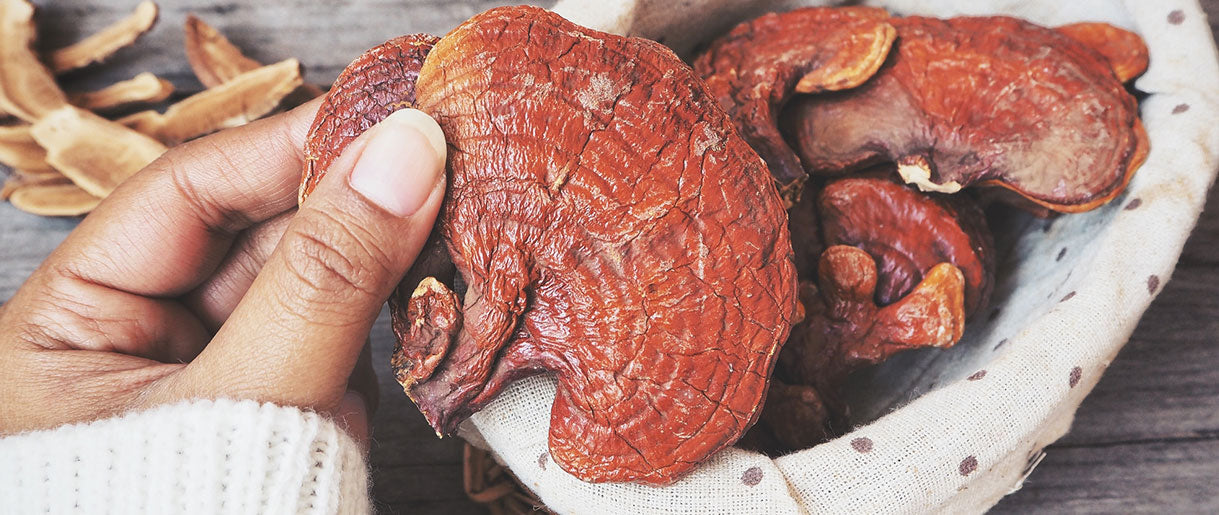
In the wild, you can find Reishi mushrooms growing all over the world in a variety of temperatures. While some species appreciate tropical regions, others favor cooler temps. The ideal time to locate Reishi in the wild is summer through fall. However, older Reishi can be seen on trees all year long.
Growing them yourself is a terrific choice if your location does not let you forage Reishi mushrooms but you still want to take advantage of their incredible health advantages.
Reishi should be grown at home for a number of reasons, including:
- Perfect grow room conditions are not necessary.
- You don't require expensive equipment.
- Reishi can be grown either indoors or outside.
- Reishi can be grown on logs, in buckets, bags, or jars.
- They swiftly colonize new surfaces.
- They can withstand pollutants and infections.
- They can withstand both high and low CO2 concentrations.
- It's fascinating to see them grow and change.
- They can be grown in either the conk form or the antler form.
- Growing these mushrooms is lovely.
- They offer a variety of health benefits (more on this later).
How To Grow Reishi Mushrooms?
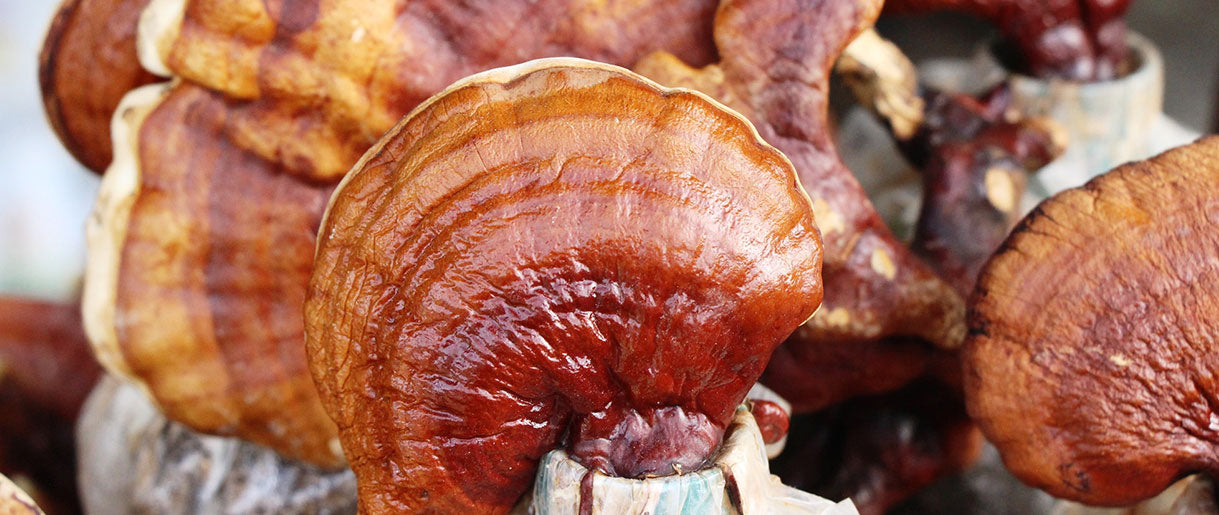
Reishi is one of the simplest medicinal mushrooms to grow at home. While cultivating Reishi mushrooms is not difficult, it is not as simple as oyster mushrooms. But the good news is starting out doesn't require a lot of prior experience.
How you grow Reishi can be something you're interested in learning if you're a total newbie. Using a Reishi grow kit is the simplest way to grow the mushroom. These are available from a local supplier or online.
Grow kits include a substrate block that has been inoculated and colonized, allowing you to begin the fruiting process as soon as you receive your Reishi mushroom grow kit. As a result, you'll soon have your own homegrown Reishi mushrooms, making you very happy.
Reishi Mushroom Substrates
The purpose of a mushroom substrate is to give the mycelium of the fungi a moist, nutrient-rich food supply. Reishi mushrooms are picky about their food, unlike oyster mushrooms, which can grow on cardboard and coffee grounds. Reishi mushrooms must be grown on logs or blocks of hardwood sawdust since they prefer a hardwood growing medium.
Supplemented hardwood pellets or sawdust, preferably oak, work well for cultivating Reishi mushrooms in bags or containers. We like to add wheat bran or oat to the hardwood pellets to provide extra nutrition for the mycelium. Gypsum and calcium carbonate are optional additions that some growers use to the substrate mixture to increase yields.
You may use logs from various trees to plant Reishi on them. For most Reishi species, sugar maple, red maple, sweetgum, silver maple, or oak are the best options.
Growing Reishi Mushrooms
Reishi mushrooms can be grown indoors in a variety of methods. The optimal one for you depends on your skill level and the quantity of mushrooms you want.
As previously discussed, a grow kit is a fantastic way for beginners to cultivate Reishi mushrooms rapidly and successfully. You can also purchase Reishi grain spawn and prepare and inoculate the substrate if you want to learn more about the procedure.
Growing your own Reishi grain spawn from scratch is even more challenging. To try this, you should wait until you have some experience.
Reishi mushrooms may grow in various containers, including bags, jars, buckets, and other repurposed containers, and they can handle both high and low amounts of CO2.
Let’s explore the two main ways to grow Reishi.
Option 1: Using a fruiting block to grow Reishi
Fruiting blocks resemble natural logs in form and function and can be purchased from nearby vendors. They comprise bran and hardwood sawdust in 5-pound blocks that are disinfected before being inoculated with grain spawn.
To prepare the planting space for fruiting blocks, blend sawdust or wood chips into the substrate to improve moisture retention and water percolation.
Timeline
About 20 days can pass between the beginning of the spawn run and the end of colonization. After roughly 28 days, the mushroom develops "finger-like" antler growth. The fruiting blocks are suitable for use and planting when the antlers are between one and three inches long.
The sawdust blocks must be removed from their packages and placed in the ground. Plant them deeply to prevent them from floating in water that is pooling. Over the next 75 to 90 days, Reishi will develop into its classic appearance, a shelf fungus. If the growing season is long enough, you can anticipate a second flush after 75 to 90 days.
Growing environment
Reishi can be grown indoors (in a greenhouse), outdoors (on the forest floor), or artificially humid and shady. Although growing mushrooms in a greenhouse is more expensive upfront than growing outdoors, they mature more quickly.
Cover the greenhouse with a shade cloth (covering 70% to 75% of the greenhouse). Again, depending on the stage of growth you're at, you'll have different oxygen needs.
Option 2: Inoculating sawdust spawn into logs
To grow red Reishi mushrooms traditionally, logs are inoculated with spores and "fresh" or "immature" sawdust spawn, incubated for the nine-to-twelve-month spawn run, and then planted in the ground of a shaded greenhouse in the early spring. Here "immature" means working with the young mycelium before it can harden to the woody, conky, leathery texture typical of the mature shelf fungus.
Regardless of the substrate, Reishi takes longer to produce mature mushrooms than cultivars like Oyster, Shiitake, and Lion's mane.
The best time to plant Reishi for outdoor log cultivation is in the spring, though you can plant all summer. Reishi grows best at temperatures between 24 to 29 C (75 to 85 F), so if you're using a fruiting block to grow it outdoors, you can plant it throughout spring and summer.
Reishi fruit in the early to mid-summer outdoors, and if there is a late cold snap, you might need to cover the mushroom pins. However, Reishi mushrooms can be grown all year long indoors under regulated conditions.
Factors Affecting Reishi Mushroom Growth
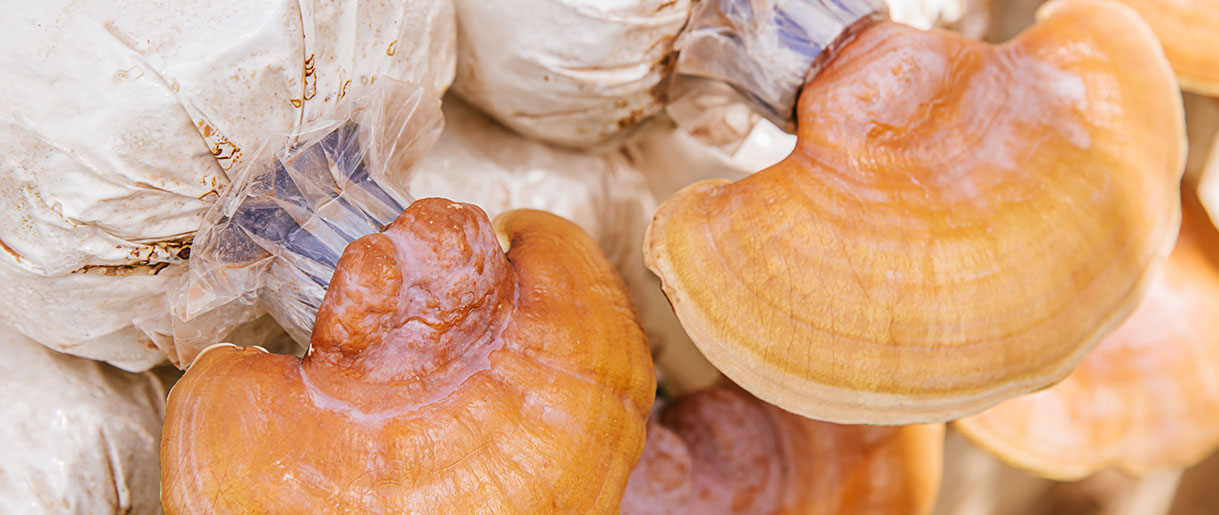
Reishi mushrooms' growth depends on how and where they are grown. For example, mushroom cultivation on logs requires more time than in bags or containers.
Try cultivating Reishi with a block of supplemented sawdust, indoors or out. After inoculating the substrate, it may take eight weeks to collect fresh Reishi.
The longest stage is fruiting, and it can take up to six weeks for Reishi to mature after the appearance of pins. After that, however, colonization proceeds rather quickly. The mycelium typically needs 7 to 14 days to colonize a sawdust block completely.
However, colonization takes much longer if you grow Reishi on logs. Before your Reishi starts to fruit, it takes 9 to 12 months to inoculate logs with sawdust spawn. Additionally, it may take 15 to 18 months after inoculating logs with plug spawn before you notice any Reishi mushroom growth.
Furthermore, colonization takes longer the bigger your logs are in diameter. Reishi growth times are also influenced by temperature and other environmental factors. For example, the process might be slowed down by cooler temperatures.
Reishi Mushroom Benefits
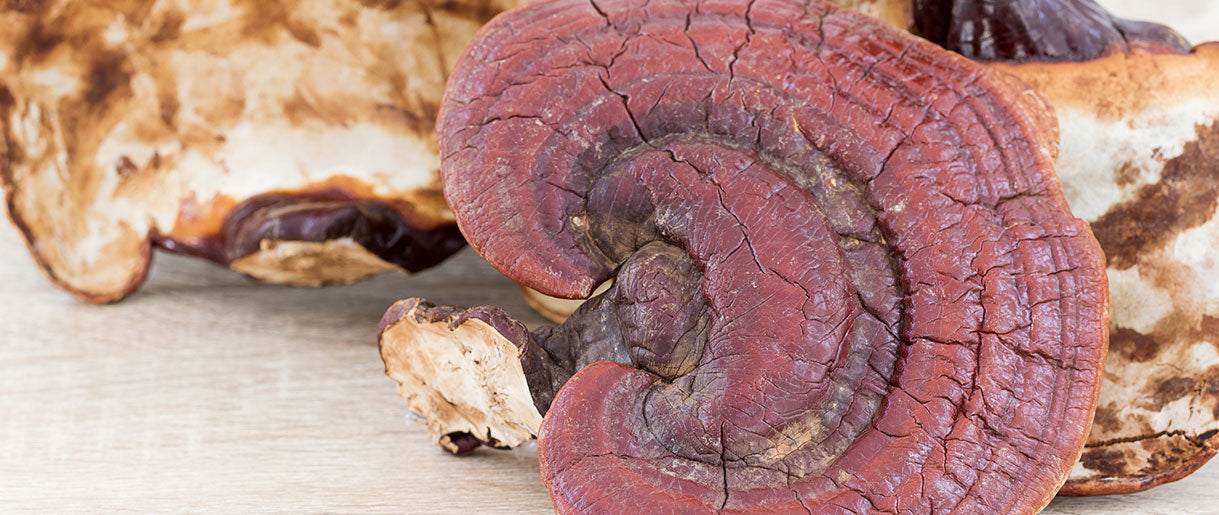
Reishi mushrooms are lauded in texts describing traditional Chinese medicine for their capacity(2) to:
- Improve heart health.
- Enhance memory.
- Cleanse the body.
Over time, the use of the mushrooms expanded to treat a wide range of ailments, including dizziness, asthma, sleeplessness, and irregular heartbeat.
According to studies, mushrooms also exhibit significant antioxidant activity, defending your body against cell deterioration that raises your risk of developing several chronic diseases.
While studies are still in progress, Reishi mushrooms may also help:
- Decrease fatigue.
- Improve your immunity.
- Promote cancer-fighting effects.
FAQs About How To Grow Reishi Mushroom?
How Long Does It Take Reishi To Grow?
Reishi has a long maturation period. So before harvesting, you can let them grow for more than three months!
Can Reishi Grow On Straw?
Reishi won't thrive on straws. Instead, try growing Reishi either indoors or outdoors using a block of enriched sawdust.
Key Takeaways
How do you grow Reishi mushroomsat home? Simple: either inoculate logs with sawdust spawn or use a fruiting block. However, a grow kit is a fantastic way for beginners to cultivate Reishi mushrooms rapidly and effectively. The best method for you will depend on your skill level and the quantity of mushrooms you want to produce.
References
-
Chapter 9, Ganoderma lucidum (Lingzhi or Reishi),
(1)https://www.ncbi.nlm.nih.gov/books/NBK92757/ - Exploring the Potential Medicinal Benefits of Ganoderma lucidum: From Metabolic Disorders to Coronavirus Infections,(2)https://www.ncbi.nlm.nih.gov/pmc/articles/PMC10094145/



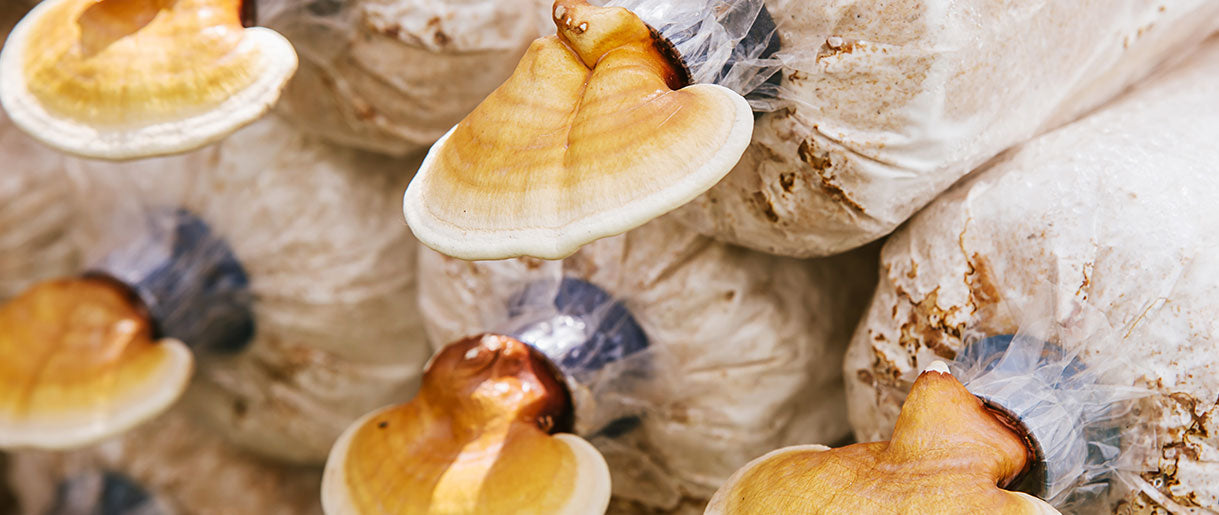



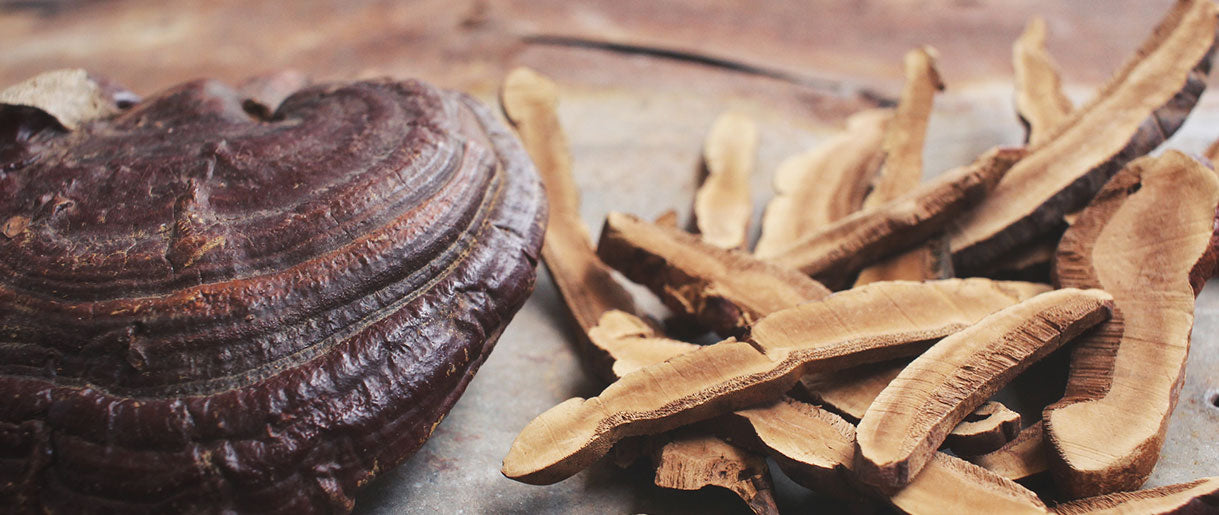
Let Us Know Your Comments